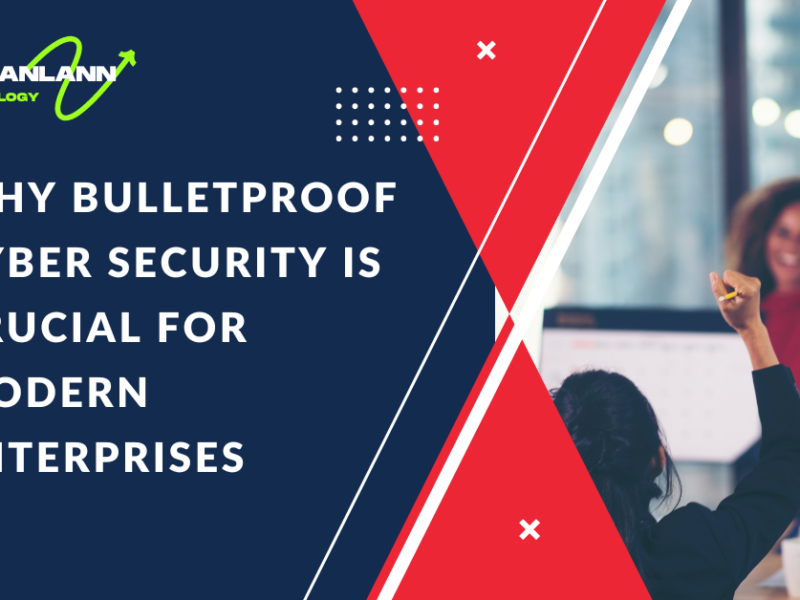As more businesses transition to cloud-based infrastructure, the convenience and flexibility it offers come with a critical challenge—security. While cloud service providers often implement robust security protocols, many businesses make avoidable mistakes that leave their cloud environments vulnerable to cyber threats. Understanding these common cloud security mistakes and knowing how to avoid them can help your business maintain the integrity of its data and operations.

In this guide, we will explore the most frequent cloud security mistakes and provide actionable steps to prevent them. We’ll cover:
- Using Weak Passwords and Insufficient Authentication
- Misconfiguring Cloud Security Settings
- Neglecting Data Encryption
- Failing to Monitor Cloud Activity
- Poor Identity and Access Management (IAM)
- Ignoring Compliance Requirements
- Inadequate Backup and Disaster Recovery Plans
- Underestimating the Shared Responsibility Model
- Overlooking Security Updates and Patches
- Lack of Employee Security Training
By addressing these key areas, your business can strengthen its cloud security and minimize the risk of data breaches.
1. Using Weak Passwords and Insufficient Authentication
One of the simplest yet most dangerous cloud security mistakes is relying on weak passwords and failing to use strong authentication methods. Cybercriminals often exploit weak passwords to gain unauthorized access to sensitive data and systems.
How to Avoid This Mistake:
- Enforce Strong Password Policies: Require employees to use complex passwords that include a combination of letters, numbers, and special characters. Ensure passwords are changed regularly.
- Implement Multi-Factor Authentication (MFA): MFA adds an extra layer of security by requiring users to provide two or more authentication factors. This can include something the user knows (a password), something they have (a phone or hardware token), and something they are (fingerprint or facial recognition).
- Use Password Management Tools: Encourage employees to use password managers to store and generate strong, unique passwords for each account.
By strengthening your authentication processes, you can significantly reduce the chances of unauthorized access to your cloud infrastructure.
2. Misconfiguring Cloud Security Settings
Cloud misconfigurations are a leading cause of data breaches. Misconfigurations occur when cloud resources such as storage buckets, databases, or virtual machines are incorrectly set up, making them vulnerable to exploitation.
How to Avoid This Mistake:
- Use Cloud Security Posture Management (CSPM) Tools: CSPM tools help automate the detection of misconfigurations and enforce best practices for security settings.
- Conduct Regular Security Audits: Perform routine audits of your cloud environment to identify and fix any misconfigurations.
- Follow Provider Security Guidelines: Major cloud service providers (such as AWS, Azure, and Google Cloud) offer best practice security guidelines. Ensure your IT team follows these recommendations.
Taking steps to properly configure your cloud environment is essential for protecting your data from unauthorized access.
3. Neglecting Data Encryption
Data encryption is one of the most effective ways to protect sensitive information from cybercriminals. However, many businesses neglect to encrypt their data, leaving it exposed to potential attacks.
How to Avoid This Mistake:
- Encrypt Data at Rest and in Transit: Ensure that all sensitive data is encrypted, whether it is being stored in the cloud (data at rest) or transferred between systems (data in transit). Use strong encryption protocols such as AES-256 for data at rest and TLS for data in transit.
- Manage Encryption Keys Securely: Use a centralized key management system to ensure encryption keys are stored securely and only accessible to authorized personnel.
- Implement End-to-End Encryption (E2EE): For highly sensitive data, use E2EE to ensure that data remains encrypted throughout its entire lifecycle, from source to destination.
By using encryption, you add an extra layer of protection to your data, making it harder for cybercriminals to exploit in the event of a breach.
4. Failing to Monitor Cloud Activity
Failing to monitor cloud activity can allow suspicious behavior to go undetected, increasing the likelihood of a security breach. Without continuous monitoring, it’s difficult to identify unauthorized access or unusual patterns of behavior.
How to Avoid This Mistake:
- Implement Real-Time Monitoring: Use cloud monitoring tools that offer real-time visibility into user activity and system performance.
- Set Up Security Alerts: Configure alerts for suspicious activities such as failed login attempts, access from unusual locations, or large data transfers.
- Use Intrusion Detection and Prevention Systems (IDPS): IDPS tools can detect and prevent malicious activities within your cloud environment by analyzing traffic for threats.
Regular monitoring helps you quickly identify and respond to potential security issues, minimizing the risk of a data breach.
5. Poor Identity and Access Management (IAM)
A common cloud security mistake is giving users excessive access to sensitive resources. Without proper Identity and Access Management (IAM), businesses may inadvertently allow unauthorized users to access critical data or systems.
How to Avoid This Mistake:
- Implement Role-Based Access Control (RBAC): RBAC ensures that users only have access to the resources they need to perform their job functions. Assign roles and permissions based on the principle of least privilege.
- Review Access Rights Regularly: Conduct regular audits of user access rights to ensure that only authorized personnel have access to sensitive resources.
- Use Identity Federation: Implement identity federation solutions like Single Sign-On (SSO) to centralize access control and enhance security across multiple cloud services.
Proper IAM ensures that only trusted users can access sensitive data, reducing the likelihood of insider threats or accidental breaches.
6. Ignoring Compliance Requirements
Many businesses overlook the importance of meeting compliance standards when using cloud services. Failing to adhere to industry regulations can lead to legal consequences and hefty fines, in addition to security vulnerabilities.
How to Avoid This Mistake:
- Understand Relevant Regulations: Ensure your business complies with data protection regulations such as GDPR, HIPAA, or PCI DSS, depending on your industry and location.
- Work with Compliant Cloud Providers: Choose cloud service providers that comply with relevant industry standards and regulations.
- Regular Compliance Audits: Conduct regular audits to ensure ongoing compliance with regulations and security standards.
By staying compliant, you not only protect your business from legal and financial risks but also enhance your overall security posture.
7. Inadequate Backup and Disaster Recovery Plans
A critical cloud security mistake is failing to implement robust backup and disaster recovery plans. Without proper backup procedures, data loss caused by cyberattacks, hardware failure, or accidental deletion could be irreversible.
How to Avoid This Mistake:
- Implement Regular Backups: Schedule regular backups of your cloud data and ensure that backup data is encrypted and stored securely.
- Test Your Recovery Plan: Regularly test your disaster recovery plan to ensure that it is effective in restoring lost data and minimizing downtime.
- Use Geo-Redundant Storage: Store backups in multiple geographic locations to protect against natural disasters or localized data loss.
Having a reliable backup and recovery strategy ensures business continuity in the event of data loss or a security breach.
8. Underestimating the Shared Responsibility Model
The shared responsibility model is a critical concept in cloud security, but many businesses overlook their role in it. Cloud providers typically manage the security of the infrastructure, but businesses are responsible for securing their data and applications within the cloud.
How to Avoid This Mistake:
- Understand Your Responsibilities: Review your cloud provider’s shared responsibility model to understand which security tasks are managed by the provider and which are your responsibility.
- Implement Appropriate Security Controls: Ensure that you implement the necessary security controls to protect your applications, data, and networks in the cloud.
- Stay Informed About Updates: Keep up with security updates and changes from your cloud provider, as they may impact your responsibilities under the shared model.
Recognizing your role in cloud security ensures that both you and your provider work together to maintain a secure environment.
9. Overlooking Security Updates and Patches
Outdated software is one of the most common entry points for cybercriminals. Neglecting to apply security patches and updates leaves your cloud environment vulnerable to exploitation.
How to Avoid This Mistake:
- Enable Automatic Updates: Ensure that your cloud services and applications are set to receive automatic updates and security patches.
- Regularly Patch Third-Party Applications: Many cloud environments rely on third-party tools or applications. Regularly update these applications to avoid vulnerabilities.
- Monitor Patch Management: Use a patch management system to ensure all systems and software in your cloud environment are updated promptly.
By keeping your software and systems up to date, you can reduce the risk of vulnerabilities being exploited by cybercriminals.
10. Lack of Employee Security Training
Your employees are often the first line of defense against cyberattacks. However, without proper security training, they may inadvertently expose your cloud environment to risks, such as falling for phishing scams or misusing cloud services.
How to Avoid This Mistake:
- Provide Regular Security Training: Conduct regular training sessions to educate employees on cloud security best practices, such as identifying phishing attempts, using strong passwords, and following secure protocols.
- Create a Security Awareness Culture: Encourage a culture of security awareness, where employees feel responsible for protecting sensitive data and following security protocols.
- Simulate Phishing Attacks: Use simulated phishing tests to assess employee responses and provide additional training for those who may be vulnerable.
Well-trained employees can significantly reduce the likelihood of security breaches and ensure that your business follows secure cloud practices.
Conclusion
Securing your cloud environment requires ongoing vigilance and attention to detail. By avoiding common cloud security mistakes such as weak passwords, misconfigurations, neglecting encryption, and failing to monitor activity, you can significantly reduce your risk of a data breach. Ensuring proper access management, maintaining compliance, and regularly updating your systems further fortifies your cloud infrastructure.




Thanks
OK.
Thanks
Thanks
Hello 🤗
🤗🤗🤗😍